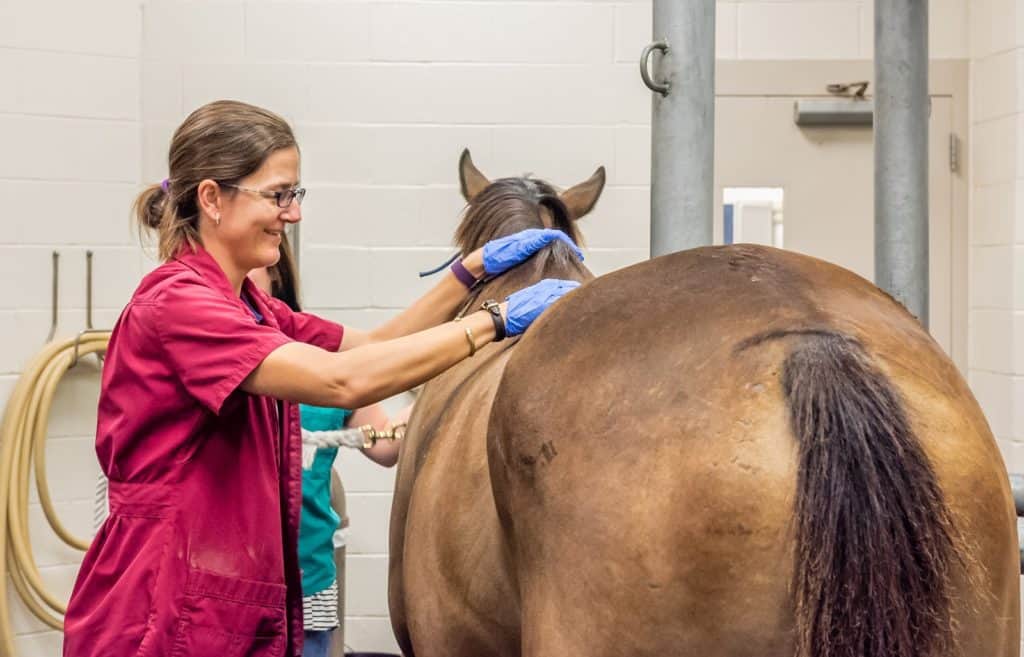Participation Sought in Study on Collapse, Sudden Death
The researchers are nearly ready to start analyzing data, but the surveys will remain online for a few more weeks.
News and issues for equine health professionals
The researchers are nearly ready to start analyzing data, but the surveys will remain online for a few more weeks.

A vitamin E deficiency can lead to neurologic problems as well as a retina disorder called pigment retinopathy.

Shane Westman, APF, is a lifelong horseman and has worked as a farrier for 23 years.

Some horses’ navicular bones segmented into two or three parts, which can be detrimental to health and welfare.

Researchers are making steady progress toward understanding catastrophic fractures and, ultimately, how to prevent them.

Learn about applications of therapeutic and regulatory medicine in performance horses. Presented by Jennifer Davis, DVM, PhD, Dipl. ACVIM, ACVP, associate professor of equine internal medicine/clinical pharmacology at North Carolina State University.
The new unit allows veterinarians to perform high-definition CT scans on standing or recumbent (lying down) horses.

Researchers believe the tested supplements could help reduce the joint inflammation that can lead to osteoarthritis.

Researchers found that jumping at shows two weekends in a row did not allow horses adequate muscle recovery.

A look at noninvasive high-tech therapies–from lasers to ceramic-thread blankets–and how they might help horses heal.
Lecture topics will include neurologic and orthopedic problems, imaging techniques, and treatment and rehab options.

Horses consuming the supplement following joint injections were less lame than control horses, researchers found.

In honor of National Veterinary Technician Week, here’s some information about vets’ right-hand men and women.
Researchers will work to develop culture techniques so donor stem cells can be used safely and effectively in horses.
Dr. Kathryn Wulster is a radiologist and assistant professor of diagnostic imaging at Penn Vet.

Microchips could offer benefits beyond identification for your horse.
Stay on top of the most recent Horse Health news with
"*" indicates required fields